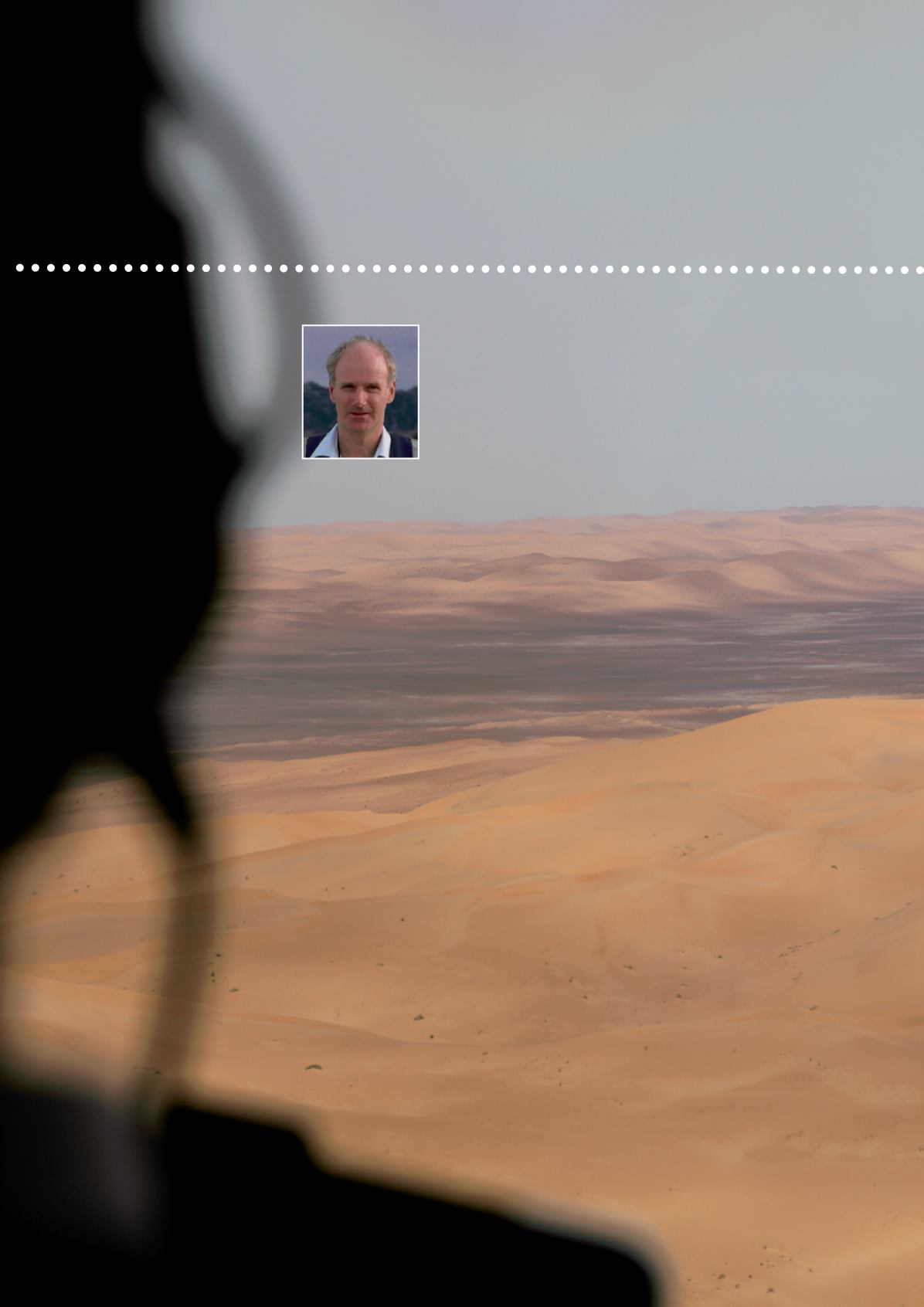
8
The Keble Review 2013
ost people either love or hate deserts – you tend
to know almost immediately which it is going to be.
Although I haven’t been able to work out exactly
why, I have always loved them. My deep attachment to the
central Sahara began more than 10 years ago. Having driven
my 1969 Land Rover from my previous home in Cape Town
to Oxford, I was left wondering what to do with the aging,
unheated and noisy love of my life in southeast England. A
chance conversation one rainy weekend on a climbing crag in
Wales made me realise that one could, quite easily, drive to
the central Sahara in less than a week. And so began a series
of half a dozen holidays in my trusty vehicle in southern Libya
and Algeria. One Christmas we even managed to drive all the
way across the Sahara via the Ténéré desert in Algeria and
Niger and still make it back in time for 0th week. Without
realising it, this time spent in the central Sahara was gearing
me up for some of the most exciting science I have ever done.
Standard advice is never to mix hobbies and work but in my
case heeding that counsel would have been an unconscionable
lapse.
If I could have chosen to be part of any period of climate
science it would be the pioneering effort to understand how
the large-scale climate system works – essentially why the
atmosphere moves like it does. That task fell to a lucky few
in the early half of the twentieth century. Or so I thought.
It turns out that there are some parts of the world – the
central Sahara among them - with climates too extreme for
human habitation and about which our knowledge is incredibly
sketchy. The climate there is not simply extreme. Its influence
is vital to weather at great distances from the core of the
desert.The central Sahara is the world’s largest source of
mineral dust, many millions of tons of which are transported
across the Atlantic to the Amazon and the Caribbean,
interacting with the weather systems like tropical cyclones
along the way. Intense surface heating drives the deepest
thermals thought to exist on the planet – easily 5km high on
most summer days. The Saharan Heat Low, a vast area of low
pressure, is a vital component of the West African Monsoon –
on which millions of people depend for life-giving rain. Given
how connected the climate system has proven to be, the
Sahara is not a part of the world we can afford to know little
about. But because we have virtually no observations of the
atmosphere from the Sahara, we have not been in a position to
understand how even the average state of the climate system
there works. With the combination of the knowledge gained
on many Saharan travels, my love of deserts and the chance
to be part of that pioneering effort of a bygone age, a major
Richard Washington
is Professor of
Climate Science
at the School of
Geography and
the Environment
and Fellow of
Keble College. He
specialises in African
climate science.
m
Flying over the
Sahara


